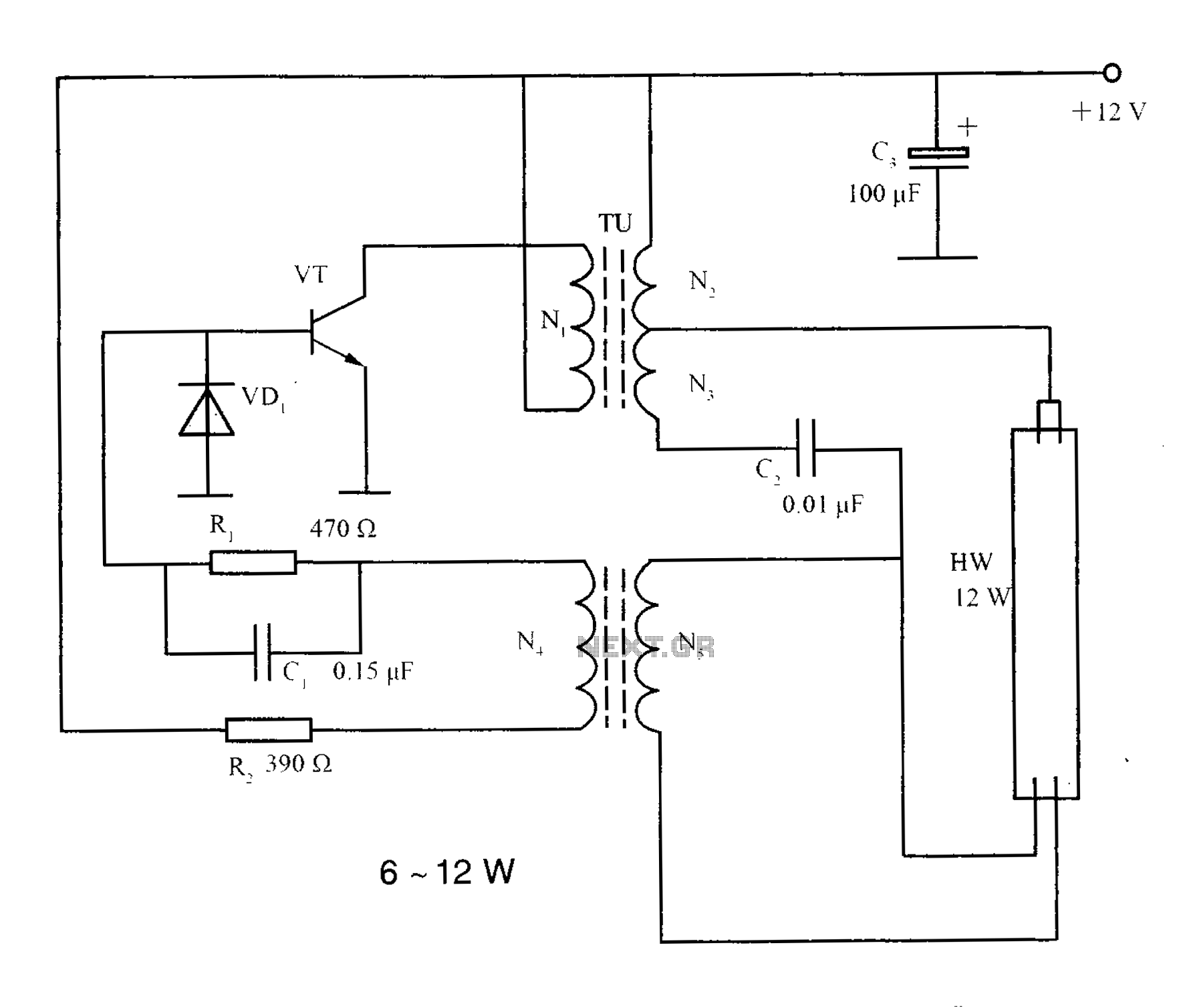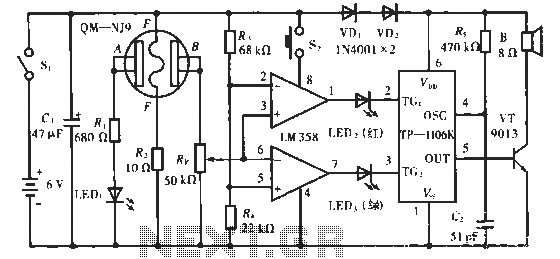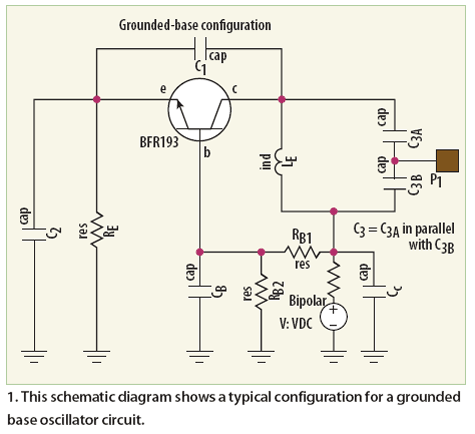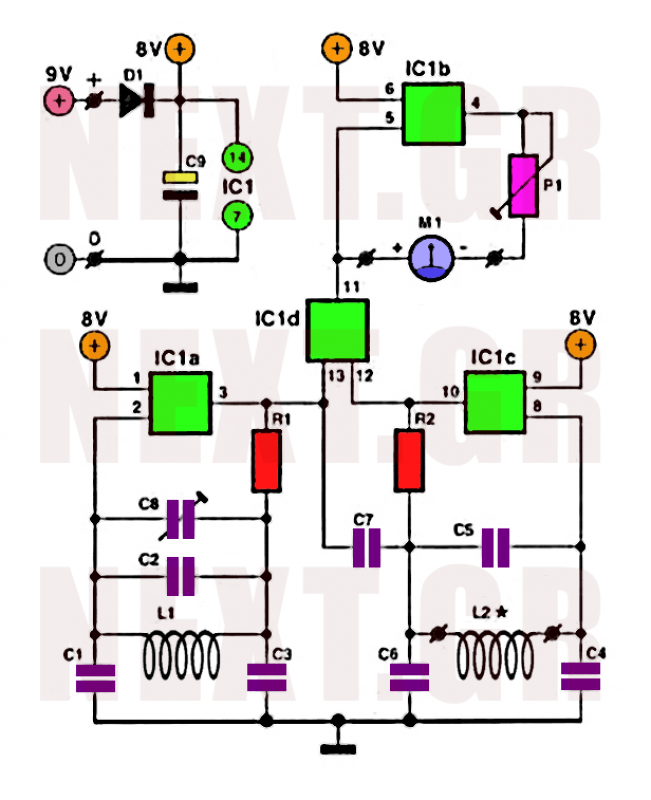
Detect ringing signal tone with light and sound

The circuit detects a ringing signal tone and provides both light and sound indicators. It is user-friendly and of good quality, and it does not require a power supply to operate, functioning solely to detect the ringing signal.
The described circuit is designed to detect ringing signals, commonly associated with telecommunication systems, and to provide visual and auditory alerts to the user. This circuit typically employs a combination of passive and active components to achieve its functionality.
At its core, the circuit utilizes a microphone or a capacitive sensor to pick up the ringing tone, which is usually in the range of 20 Hz to 1 kHz, depending on the system design. The output from the sensor is then fed into a signal conditioning stage, which may include filters and amplifiers to enhance the ringing tone while minimizing background noise.
Following signal conditioning, a comparator circuit is often implemented to compare the conditioned signal against a predefined threshold. When the ringing signal is detected, the comparator output transitions, triggering subsequent stages of the circuit.
For the visual indicator, an LED is commonly used. The LED is connected to a transistor that acts as a switch, allowing current to flow through the LED when the ringing signal is detected, thus illuminating the LED. This provides a clear visual indication of the ringing signal.
For the auditory component, a small piezoelectric buzzer or speaker can be integrated. The output from the comparator can also drive this buzzer, producing sound to alert the user of the detected ringing signal.
The entire circuit is designed to operate without an external power supply, which can be achieved by utilizing energy harvesting techniques or by designing the circuit to draw power from the ringing signal itself. This feature enhances the usability and versatility of the circuit, making it suitable for various applications where power availability is a concern.
Overall, this ringing signal detection circuit effectively combines light and sound indicators to provide clear alerts, ensuring that users are promptly informed of incoming calls or alerts without the need for additional power sources.The detect ringing signal tone circuit with light and sound.It is easy to use and good quality, Do not enter the power supply. Which as Detect ringing signal. 🔗 External reference
The described circuit is designed to detect ringing signals, commonly associated with telecommunication systems, and to provide visual and auditory alerts to the user. This circuit typically employs a combination of passive and active components to achieve its functionality.
At its core, the circuit utilizes a microphone or a capacitive sensor to pick up the ringing tone, which is usually in the range of 20 Hz to 1 kHz, depending on the system design. The output from the sensor is then fed into a signal conditioning stage, which may include filters and amplifiers to enhance the ringing tone while minimizing background noise.
Following signal conditioning, a comparator circuit is often implemented to compare the conditioned signal against a predefined threshold. When the ringing signal is detected, the comparator output transitions, triggering subsequent stages of the circuit.
For the visual indicator, an LED is commonly used. The LED is connected to a transistor that acts as a switch, allowing current to flow through the LED when the ringing signal is detected, thus illuminating the LED. This provides a clear visual indication of the ringing signal.
For the auditory component, a small piezoelectric buzzer or speaker can be integrated. The output from the comparator can also drive this buzzer, producing sound to alert the user of the detected ringing signal.
The entire circuit is designed to operate without an external power supply, which can be achieved by utilizing energy harvesting techniques or by designing the circuit to draw power from the ringing signal itself. This feature enhances the usability and versatility of the circuit, making it suitable for various applications where power availability is a concern.
Overall, this ringing signal detection circuit effectively combines light and sound indicators to provide clear alerts, ensuring that users are promptly informed of incoming calls or alerts without the need for additional power sources.The detect ringing signal tone circuit with light and sound.It is easy to use and good quality, Do not enter the power supply. Which as Detect ringing signal. 🔗 External reference





